Blog 
Click here to go back
Check our blog for updates on regulations or resources that can be used to help you and your business achieve your financial goals.
2021 Missouri Back-to-School Sales Tax Holiday
Mark your calendar...Friday, August 6th to Sunday, August 8 will be the 2021 Missouri Back-to-School Sales Tax Holiday. The state's portion of the sales tax rate (4.225%) will be exempt for the sale of qualifying sales tax holiday items.
The sales tax exemption is limited to:
- Clothing – any article having a taxable value of $100 or less
- School supplies – not to exceed $50 per purchase
- Computer software – taxable value of $350 or less
- Personal computers – not to exceed $1,500
- Computer peripheral devices – not to exceed $1,500
- Graphing calculators - not to exceed $150
The sales tax holiday applies to state and local sales taxes when a local jurisdiction chooses to participate in the holiday. However, local jurisdictions can choose to not participate in the holiday if they enact an ordinance to not participate and notify the department 45 days prior to the sales tax holiday.
If one or all of your local taxing jurisdictions are not participating in the sales tax holiday, the state's portion of the tax rate (4.225%) will remain exempt for the sale of qualifying sales tax holiday items.
Below is a list of cities, counties, and districts that have elected not to participate in the 2021 Sales Tax Holiday.
- List of the cities that have elected not to participate in the 2021 Sales Tax Holiday.
- List of counties that have elected not to participate in the 2021 Sales Tax Holiday.
- List of districts that have elected not to participate in the 2021 Sales Tax Holiday.
Source: Missouri Department of Revenue
2021 HSA Contribution Limits
Health savings account (HSA) contribution limits for 2021 are increasing by $50 for self-only coverage and $100 for family coverage. That's about a 1.5 percent increase from the 2020 limits. Below are the contribution limits for 2021.
The minimum deductibles and maximum out-of-pocket expenses for the High-Deductible Health Plans (HDHPs) with which HSAs are paired are provided below.
HSA Contribution Limits (Employer + Employee)
Self-only: $3,600
Family: $7,200
HSA Catch-up Contribution (Age 55+)
$1,000
HDHP Minimum Deductibles
Self-only: $1,400
Family: $2,800
HDHP Maximum Out-of-Pocket
Self-only: $7,000
Family: $14,000
2021 Retirement Plan Contribution Limits
Some of the retirement contribution limits for 2021 have increased while others have remained the same. Here is a quick summary of the contribution limits for 2021.
- 401(k), 403(b), most 457 Plans, and Thrift Savings Plans - $19,500 | Catch-up* - $6,500
- Solo 401(k) - $58,000 | Catch-up* - $6,500
- SEP IRA - $58,000
- SIMPLE IRA - $13,500 | Catch-up* - $3,000
- Individual Retirement Accounts (IRA) - $6,000 | Catch-up* - $1,000
- Roth IRA - $6,000 | Catch-up* - $1,000
*Catch-up contributions apply to individuals age 50 or older, even if you turn 50 on December 31, 2021
If you earn too much to contribute to a Roth IRA due to the IRS phase out rules, you can make a non-deductible IRA contribution and convert it to a Roth IRA as congress lifted any income restrictions for Roth IRA conversions. To learn more about the “backdoor Roth”, please contact our office.
As a reminder, the passage of the SECURE Act which was signed into law on December 20, 2019, eliminated the maximum age for Traditional IRA contributions (previously, there was a restriction at the age of 70 1/2).
New Minimum Wage - Effective January 1, 2021
|
Missouri’s minimum wage has increased with the passing of the new year. Effective, January 1, 2021, workers receiving minimum wage will now make $10.30 per hour, up from $9.45 in 2020. With the passage of Proposition B in the November 2018 election, the wage will increase 85 cents a year to reach $12.00 in 2023. Employers engaged in retail or service businesses whose annual gross income is less than $500,000 are not required to pay the state minimum wage rate. Employers not subject to the minimum wage law can pay employees wages of their choosing. |
A Turkey Trot Through History
We might all know the story of the first Thanksgiving celebration, but the path to it becoming the national event we enjoy today took a cornucopia of decisions that spanned centuries as well as presidencies.
The OG (Original Gathering):
Thanksgiving originated as a three-day feast celebrating the fall harvest in November 1621 between Plymouth settlers and the Wampanoag Indians.1 Colonists continued the tradition in subsequent years with an autumn feast.
Presidential Proclamation:
George Washington issued a proclamation declaring a day of “thanksgiving and prayer” in 1789, his first year in office.2 Despite the proclamation and wide adoption among early Americans, Thanksgiving was not yet an official federal holiday.
And a Second Helping of Presidential Proclamation:
In the midst of the Civil War, and at the urging of “Mary Had a Little Lamb” author Sara Josepha Hale, President Abraham Lincoln declared Thanksgiving an official holiday,3 with the first to be so recognized on Thursday, November 26, 1863.
Is It Thanksgiving Already?
To boost holiday shopping sales, President Franklin D. Roosevelt moved Thanksgiving up one week in 1939,4 breaking the tradition of celebrating Thanksgiving on the last Thursday in November. It wasn’t without controversy, and two years later, FDR signed into law a congressional resolution declaring the fourth Thursday in November as Thanksgiving Day.5
1 Roos, D. (November 2018). Thanksgiving History Facts and Trivia. History.com https://www.history.com/news/thanksgivinghistory-trivia-facts
2 Washington, G. (October 1789). Thanksgiving Proclamation. Founders Online, National Archives.
https://founders.archives.gov/documents/Washington/05-04-02-0091 . [Original source: The Papers of George Washington,
Presidential Series, vol. 4, 8 September 1789 – 15 January 1790, ed. Dorothy Twohig. Charlottesville: University Press of Virginia,
1993, pp. 131–132.]
3 Abraham Lincoln Online. http://www.abrahamlincolnonline.org/lincoln/speeches/thanks.htm
4 Rothman, L. (November 2014). FDR Moved Thanksgiving to Give People More Time to Shop. Time.
https://time.com/3603622/fdr-moved-thanksgiving/
5 The Center for Legislative Archives, National Archives. https://www.archives.gov/legislative/features/thanksgiving
September 30th Deadline for Greene County CARES Act Relief Fund Grant Applications
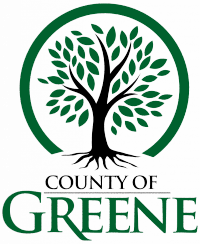 Greene County still has a significant pool of grant funding available specifically for small businesses located in Greene County with 80 or fewer employees through the Coronavirus Aid, Relief, and Economic Security (CARES) Act - but time is running out to apply.
Greene County still has a significant pool of grant funding available specifically for small businesses located in Greene County with 80 or fewer employees through the Coronavirus Aid, Relief, and Economic Security (CARES) Act - but time is running out to apply.
If your organization has experienced unexpected expenses or losses related to the pandemic, or if you anticipate you will incur such costs, you could be eligible for grant funding. As a reminder, receiving a Paycheck Protection Program Loan does not prevent you from receiving CARES Act funding.
We encourage you to visit the Greene County CARES Act Relief Fund portal (click here) to learn more and to fill out an application.
And don't delay; the deadline for small businesses to apply is the end of business on Wednesday, September 30.
The Springfield Area Chamber of Commerce has also put together this Frequently Asked Questions document (click here) to help address common questions about the program, including which types of expenses are eligible and more.
As always, if you should have any questions, please feel free to reach out to our office anytime!
What Taxpayers Need to Know About the Home Office Deduction
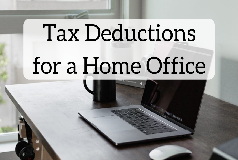 The home office deduction allows qualifying taxpayers to deduct certain home expenses on their tax return. With more people working from home than ever before, some taxpayers may be wondering if they can claim a home office deduction when they file their 2020 tax return next year.
The home office deduction allows qualifying taxpayers to deduct certain home expenses on their tax return. With more people working from home than ever before, some taxpayers may be wondering if they can claim a home office deduction when they file their 2020 tax return next year.
Here are some things to help taxpayers understand the home office deduction and whether they can claim it:
- Employees are not eligible to claim the home office deduction.
- The home office deduction is available to both homeowners and renters.
- There are certain expenses taxpayers can deduct. They include mortgage interest, insurance, utilities, repairs, maintenance, depreciation and rent.
- Taxpayers must meet specific requirements to claim home expenses as a deduction. Even then, the deductible amount of these types of expenses may be limited.
- The term "home" for purposes of this deduction:
- Includes a house, apartment, condominium, mobile home, boat or similar property.
- Also includes structures on the property. These are places like an unattached garage, studio, barn or greenhouse.
- Doesn’t include any part of the taxpayer’s property used exclusively as a hotel, motel, inn or similar business.
- There are two basic requirements for the taxpayer’s home to qualify as a deduction:
- There must be exclusive use of a portion of the home for conducting business on a regular basis. For example, a taxpayer who uses an extra room to run their business can take a home office deduction only for that extra room so long as it is used both regularly and exclusively in the business.
- The home must be the taxpayer’s principal place of business. A taxpayer can also meet this requirement if administrative or management activities are conducted at the home and there is no other location to perform these duties. Therefore, someone who conducts business outside of their home but also uses their home to conduct business may still qualify for a home office deduction.
- Expenses that relate to a separate structure not attached to the home will qualify for a home office deduction. It will qualify only if the structure is used exclusively and regularly for business.
- Taxpayers who qualify may choose one of two methods to calculate their home office expense deduction:
- The simplified option has a rate of $5 a square foot for business use of the home. The maximum size for this option is 300 square feet. The maximum deduction under this method is $1,500.
- When using the regular method, deductions for a home office are based on the percentage of the home devoted to business use. Taxpayers who use a whole room or part of a room for conducting their business need to figure out the percentage of the home used for business activities to deduct indirect expenses. Direct expenses are deducted in full.
Please contact our office to discuss the specific details of your situation and whether this deduction would be applicable to you.
Source: IRS Tax Tip 2020-98
Special Tax Benefits for Members of the Military and ROTC
 Members of the military may qualify for special tax benefits. For instance, they don’t have to pay taxes on some types of income. Special rules could lower the tax they owe or allow them more time to file and pay their federal taxes.
Members of the military may qualify for special tax benefits. For instance, they don’t have to pay taxes on some types of income. Special rules could lower the tax they owe or allow them more time to file and pay their federal taxes.
Here are some of these special tax benefits:
Combat pay exclusion: If someone serves in a combat zone, part or all of their pay is tax-free. This also applies to people working in an area outside a combat zone when the Department of Defense certifies that area is in direct support of military operations in a combat zone. There are limits to this exclusion for commissioned officers.
Other nontaxable benefits: Base allowance for housing, base allowance for subsistence and uniform allowances are among several government pay items excluded from gross income, which means they are not taxed.
Moving expenses: Some non-reimbursed moving expenses may be tax deductible. To deduct these expenses, the taxpayer must be a member of the Armed Forces on active duty and their move must be due to a military order or result of a permanent change of station.
Deadline extensions: Some members of the military – such as those who serve overseas – can postpone most tax deadlines. Those who qualify can get automatic extensions of time to file and pay their taxes.
Earned income tax credit: Special rules allow military members who get nontaxable combat pay to choose to include it in their taxable income. One reason they might do this is to increase the amount of their earned income tax credit. People who qualify for this credit could owe less tax or even get a larger refund.
Joint return signatures: Both spouses must normally sign a joint income tax return. However, if military service prevents that from happening, one spouse may be able to sign for the other or get a power of attorney. Service members may want to consult with their installation’s legal office to see if a power of attorney is right for them.
Reserve and National Guard travel: Members of a reserve component of the Armed Forces may be able to deduct their unreimbursed travel expenses on their return. In order to do so, they must travel more than 100 miles away from home in connection with their performance of services as a member of the reserves.
ROTC allowances: Some amounts paid to ROTC students in advanced training are not taxable. However, active duty ROTC pay is taxable. This includes things like pay for summer advanced camp.
Source: IRS Tax Tip 2020-93
Educator Expense Deduction
Attention teachers: Those school expenses might be tax deductible
School may look a little different this year, but eligible teachers and other educators can still deduct certain unreimbursed expenses on their tax return next year.
Who is considered an eligible educator:
The taxpayer must be a kindergarten through grade 12 teacher, instructor, counselor, principal or aide. They must also work at least 900 hours a school year in a school that provides elementary or secondary education as determined under state law.
Things to know about this deduction:
Educators can deduct up to $250 of trade or business expenses that were not reimbursed. As teachers prepare for the school year, they should remember to keep receipts after making any purchase to support claiming this deduction.
The deduction is $500 if both taxpayers are eligible educators and file their return using the status married filing jointly. These taxpayers cannot deduct more than $250 each.
Qualified expenses are amounts the taxpayer paid themselves during the tax year.
Examples of expenses the educator can deduct include:
- Professional development course fees
- Books
- Supplies
- Computer equipment, including related software and services
- Other equipment and materials used in the classroom
We wish all teachers, staff, and faculty a great 2020-2021 school year!
Source: IRS Tax Tip 2020-92
IRS Extends Rollover Deadline for Waived RMDs
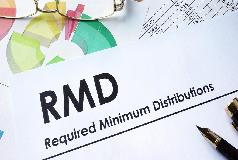 The CARES Act which was signed into law on March 27, 2020 provided a waiver for 2020 Required Minimum Distributions (RMDs) from retirement accounts. If you had already taken your 2020 RMD prior to the CARES Act being passed, you were allowed to place it back into the retirement account as long as it was within the 60 day rollover period. The IRS has since extended the deadline until August 31, 2020 to rollover a 2020 RMD back into the retirement account.
The CARES Act which was signed into law on March 27, 2020 provided a waiver for 2020 Required Minimum Distributions (RMDs) from retirement accounts. If you had already taken your 2020 RMD prior to the CARES Act being passed, you were allowed to place it back into the retirement account as long as it was within the 60 day rollover period. The IRS has since extended the deadline until August 31, 2020 to rollover a 2020 RMD back into the retirement account.
This might be an option for you if you do not need the RMD and want to reduce your 2020 taxes. If this is something that you would like to consider, please contact us to discuss this in more detail.
Source: IRS Notice 2020–51
1st & 2nd Quarter Estimated Tax Payment Reminder
Just a reminder that your first and second quarter federal and state tax estimates are due on or before July 15, 2020.
Please use your pre-printed forms and mail with your checks to the address indicated on the estimate vouchers. You should refer to your 2019 tax folder for this information.
Also, be sure to write your social security number and "2020 1040-ES" on the memo line of your check.
If you should need vouchers or have any questions, please do not hesitate to give us a call.
If you have already made these estimate payments, please disregard this reminder.
July 15th Tax Deadline
Just a quick reminder that due to the COVID-19 pandemic, the IRS extended the tax filing deadline from April 15th to July 15th. This extension also applied to taxes owed for 2019, even if you filed before April 15th. If you have a balance due on your 2019 taxes, that payment is due July 15th.
The extended deadline also affected a few other deadlines as follows:
2019 IRA Contributions
If you are planning to make a contribution to your Individual Retirement Account (IRA) for the 2019 tax year, those contributions are due by July 15th.
2019 HSA Contributions
If you are planning to make a contribution to your Health Savings Account (HSA) for the 2019 tax year, those contributions are due by July 15th.
If you should have any questions about these upcoming deadlines, please feel free to reach out to our office.
Paycheck Protection Program (PPP) Flexibility Act
|
The Treasury and the Small Business Administration (SBA) will now issue new and updated guidance to reflect changes noted below. More time to use PPP loan funds: The new law extends the time period to use PPP loan proceeds to obtain forgiveness from eight weeks from the date the funds are received to 24 weeks, with the new period ending the earlier of 24 weeks after receipt of loan proceeds or December 31, 2020. This gives businesses more flexibility to deploy the funds while remaining eligible to qualify for forgiveness. The Act does not extend the date to apply for a PPP loan, therefore the SBA will continue to accept applications only through June 30, 2020. More of the PPP loan can be used for operational expenses: The Act reduces the portion of a loan that must be used for eligible payroll expenses from 75% to 60%. Businesses will now be able to spend up to 40% of the total PPP loan amount on eligible non-payroll expenses such as lease payments, mortgage interest, and utilities. Caution should be exercised: if less than 60% of the loan total is used for eligible payroll expenses, loan forgiveness may no longer be an option. This is a new issue that we hope will be favorably resolved with more guidance. More time to rehire employees and restore salaries: The Act also extends the period which businesses have to restore jobs, or full-time equivalents (FTE), and pay in order to qualify for maximum loan forgiveness through December 31, 2020. If jobs are not restored in accordance with the Coronavirus Aid, Relief, and Economic Security (CARES) Act and the PPP Flexibility Act, the amount of the PPP loan that can be forgiven will be reduced unless PPP recipients can demonstrate either the recipient is unable to rehire former employees or similarly qualified employees, and/or is unable to return to the same level of business activity at which it was operating before February 15, 2020 due to compliance with federal requirements or guidance related to COVID-19. Ability to defer payroll taxes: The Act allows PPP recipients to defer payment of payroll taxes incurred during the period beginning on March 27 and ending on December 31, 2020. Loan recipients may now defer payment of 50% of employer’s payroll taxes from 2020 until December 31, 2021 and with the remaining 50% due on December 31, 2022. Before, this option was available only to those who did not receive a PPP loan. More time to repay the loan: Businesses with PPP loans not forgiven or forgiven only in part will now have five years instead of two to repay the unforgiven portion of a loan. Loans will continue to accrue interest at 1% per year. If you have already received a loan and executed a promissory note for the full PPP, we recommend actively seeking guidance from your respective lender to have your promissory note amended in connection with your application process seeking forgiveness. This is only important to the extent that your PPP loan is not fully forgiven (including situations where you also received an Economic Injury Disaster Loan (EIDL) advance). While the new provisions ease PPP forgiveness requirements, many important mechanics and details are yet to come from the Treasury and the SBA. Moreover, there are several unanswered questions to which we hope (but can’t promise) to receive further guidance soon, including around the IRS’ recent decision that payroll and other permitted expenses forgiven are not deductible on the recipient’s 2020 tax returns. We are continuing to pay close attention to these and other important developments and will update you accordingly. My team and I are here to continue to help you pursue your financial goals during these unprecedented times. Best wishes to you and your loved ones. The information contained herein is for information purposes and is not legal or tax advice. Please contact your tax or legal professional to discuss specific interpretations around the CARES and Flexibility Acts and related rules and how they apply to your unique facts and circumstances. |
A 7 Point Financial Checklist While You Are Sheltering at Home!
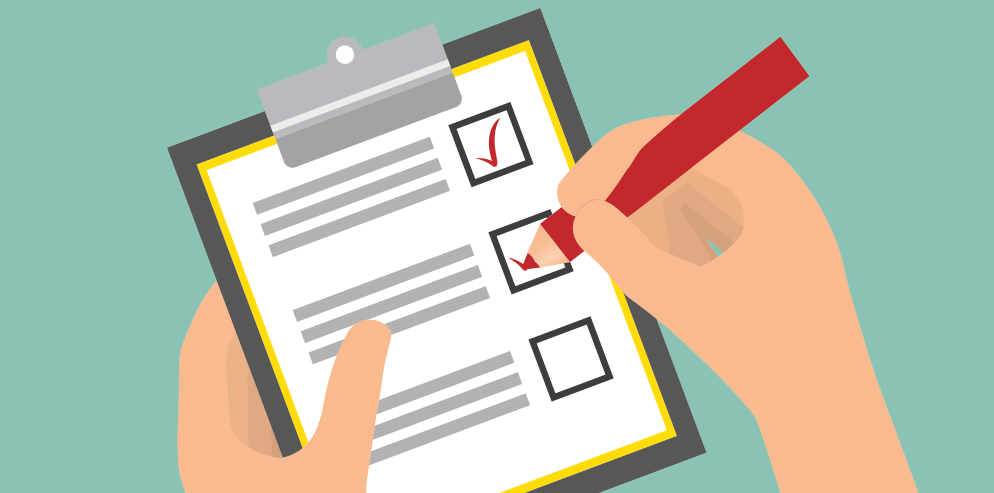 If you find yourself sheltering at home, check out our 7 point financial checklist.
If you find yourself sheltering at home, check out our 7 point financial checklist.
1. “Smart Spending”
* Reflection on spending habits - Review your checkbook and quarterly credit card summaries for where and what you spent money on.
* Back to Normalcy - When we push the “On” button again in all our lives, are these items something we need to spend money on? Want to spend money on? Or we can live without moving forward?
2. Debt Management
* Gather Mortgage Statements - Pull your most recent mortgage statement and 2019 Form 1098.
* Mortgage Audit/Refinance - Does it make sense to consider starting the process to refinance your mortgage, given how low mortgage rates have fallen?
* Consolidation of Debt(s) - If you have credit card, student, or any other miscellaneous debt and are refinancing, does it make sense to cash out a portion of your equity to eliminate the credit card debt?
* Strategize Your Debt - Can you rank all your debt from the highest to the lowest balance or the highest to the lowest interest rate loans? Do you have a strategy to eliminate your debt by highest balance or highest rate loans first?
3. Cash Reserves
* Liquid Accessibility - If your income has been reduced or you have been laid off or furloughed, have your prioritized how you will access your cash reserves by type of account, accessibility and tax treatment?
* Future Cash Needs - Have you considered a plan to replenish or build up cash reserves starting in late 2020 and into 2021?
* Reassessment of Current Cash Needs - If you are still working full time, are you comfortable with your cash reserves in the event you need to access them for 90 or 120 days?
4. Protection Strategies
* Covid-19 Test - Testing is now free for all Americans with no co-pay or application of deductible. Are you comfortable with all the provisions of your health insurance if you or a family member ends up in the hospital under care for COVID-19?
* Short/Long Term Disability Insurance - Do you have short-term and/or long-term disability to cover an extended absence from work?
* Long Term Care Review - If you have long-term care insurance, do you know how those benefits could be utilized with a positive COVID-19 test?
* Healthcare Directive and POA - Do you have a Healthcare Power of Attorney and a Durable Power of Attorney for yourself and your spouse? For your kids over the age of 18? Do your adult children and their spouses have both?
* Will and Trust Audit - When was the last time you updated your Will and/or your Living Trust? Has it been updated for the current ages of your children? Your grandchildren? Have your parents done this?
* Personal Insurance Summary - Do you have a summary of all your life insurance policies? Are the beneficiaries updated? When did you last review the amount of coverage?
5. COVID-19 Relief
* Individual and Small Business Owners CARES Act Summaries - In previous weeks, we have sent emails regarding the Individual and Small Business summaries with all the provisions of the COVID-19 legislation.
* Families First Coronavirus Response Act - Are you familiar with the Families First Coronavirus Response Act (FFCRA) and its sick leave and medical leave provisions?
* Advanced Rebates of 2020 Tax Credit - Are you eligible for a cash payment from the stimulus bill?
* IRA & 401(k) Distribution Changes - Are you familiar with the IRA and 401(k) provisions to ease restrictions on access to these funds?
* RMD Suspension - Are you familiar with the suspension of Required Minimum Distributions (RMDs) for 2020?
* Tax Filing Extension - Are you familiar with the extension of the tax filing deadline?
* Unemployment Benefit Increases - Are you comfortable with the additional unemployment benefits and medical benefits provided?
* Student Loan Payments - Are you aware that student loan interest has been temporarily suspended?
6. Consider “Risk On”
* Picking up where we left off - When the economy stabilizes, the market will stabilize. When the economy rebounds, the expectation is that the market will follow on. Many feel this rebound will continue to follow any economic “boom” from pent up demand, stimulus relief, and further expansion of manufacturing in the United States.
* Check-up on your Portfolio Mix - Have you considered revising your portfolio strategy and target mix to capitalize on any potential rebound in the market?
* Increasing Your Periodic Savings - Have you considered how much more you could commit to your regular, monthly contributions to your retirement, savings, and investment plans?
7. Financial and Tax Strategies
* Roth Conversion Opportunities - Have you considered converting your Traditional IRA to a Roth IRA while the value is down, and the tax associated with a conversion is lower?
* Tax Harvesting Opportunities- There will be opportunities for tax loss and tax gain harvesting now and into the recovery. Have you considered strategies to take advantage of the tax laws associated with your portfolios in 2020?
* RMD Suspension Strategy - With the suspension of RMDs, have you considered utilizing the planned payment for another financial strategy?
* Additional Investment Opportunities - If your spending evolves over the next few months, have you considered what you would do with an additional monthly surplus of cash flow?
If you should have questions about any items on this list, please contact one of the professionals in our office to discuss in more detail. Stay safe and healthy!
IRS Issues Warning About Coronavirus Related Scams
 The Internal Revenue Service is urging taxpayers to be on the lookout for a surge of calls and email phishing attempts about the Coronavirus, or COVID-19. These contacts can lead to tax-related fraud and identity theft.
The Internal Revenue Service is urging taxpayers to be on the lookout for a surge of calls and email phishing attempts about the Coronavirus, or COVID-19. These contacts can lead to tax-related fraud and identity theft.
"We urge people to take extra care during this period. The IRS isn't going to call you asking to verify or provide your financial information so you can get an economic impact payment or your refund faster," said IRS Commissioner Chuck Rettig. "That also applies to surprise emails that appear to be coming from the IRS. Remember, don't open them or click on attachments or links. Go to IRS.gov for the most up-to-date information."
Taxpayers should watch not only for emails but text messages, websites and social media attempts that request money or personal information.
“History has shown that criminals take every opportunity to perpetrate a fraud on unsuspecting victims, especially when a group of people is vulnerable or in a state of need,” said IRS Criminal Investigation Chief Don Fort. “While you are waiting to hear about your economic impact payment, criminals are working hard to trick you into getting their hands on it. The IRS Criminal Investigation Division is working hard to find these scammers and shut them down, but in the meantime, we ask people to remain vigilant.”
Don’t fall prey to Coronavirus tricks; retirees among potential targets
The IRS and its Criminal Investigation Division have seen a wave of new and evolving phishing schemes against taxpayers. In most cases, the IRS will deposit economic impact payments into the direct deposit account taxpayers previously provided on tax returns. Those taxpayers who have previously filed but not provided direct deposit information to the IRS will be able to provide their banking information online to a newly designed secure portal on IRS.gov in mid-April. If the IRS does not have a taxpayer’s direct deposit information, a check will be mailed to the address on file. Taxpayers should not provide their direct deposit or other banking information for others to input on their behalf into the secure portal.
The IRS also reminds retirees who don’t normally have a requirement to file a tax return that no action on their part is needed to receive their economic impact payment. Seniors should be especially careful during this period. The IRS reminds retirees that no one from the agency will be reaching out to them by phone, email, mail or in person asking for any kind of information to complete their economic impact payment, also sometimes referred to as rebates or stimulus payments. The IRS is sending these payments automatically to retirees – no additional action or information is needed on their part to receive this.
The IRS reminds taxpayers that scammers may:
- Emphasize the words “Stimulus Check” or “Stimulus Payment.” The official term is economic impact payment.
- Ask the taxpayer to sign over their economic impact payment check to them.
- Ask by phone, email, text or social media for verification of personal and/or banking information saying that the information is needed to receive or speed up their economic impact payment.
- Suggest that they can get a tax refund or economic impact payment faster by working on the taxpayer’s behalf. This scam could be conducted by social media or even in person.
- Mail the taxpayer a bogus check, perhaps in an odd amount, then tell the taxpayer to call a number or verify information online in order to cash it.
Reporting Coronavirus-related or other phishing attempts
Those who receive unsolicited emails, text messages or social media attempts to gather information that appear to be from either the IRS or an organization closely linked to the IRS, such as the Electronic Federal Tax Payment System (EFTPS), should forward it to phishing@irs.gov.
Taxpayers are encouraged not to engage potential scammers online or on the phone. Learn more about reporting suspected scams by going to the Report Phishing and Online Scams page on IRS.gov.
What You Need to Know....Coronavirus Stimulus Package - CARES Act
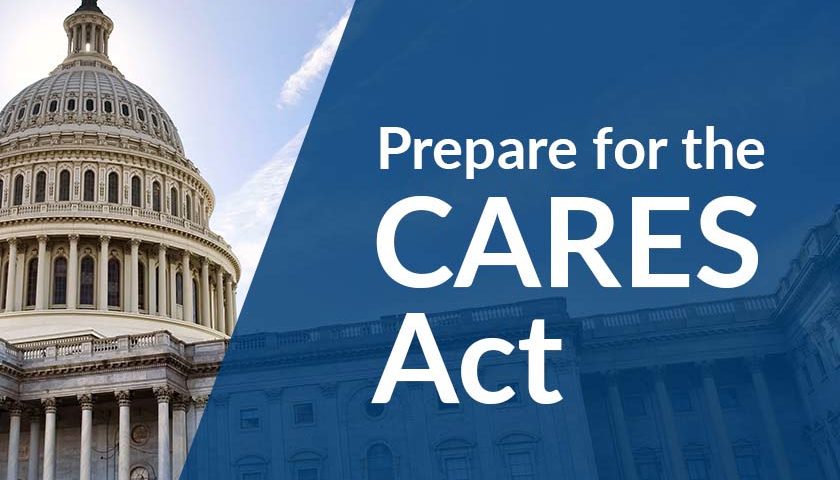 On Friday, President Trump signed the Coronavirus Aid Relief and Economic Security Act (CARES Act) into law. The CARES Act provide significant financial assistance to individuals and businesses, among others. Below are some resources links as well as some of the highlights of this historical $2.2 trillion stimulus package and how it affects you as an individual and/or a business..
On Friday, President Trump signed the Coronavirus Aid Relief and Economic Security Act (CARES Act) into law. The CARES Act provide significant financial assistance to individuals and businesses, among others. Below are some resources links as well as some of the highlights of this historical $2.2 trillion stimulus package and how it affects you as an individual and/or a business..
Resource Links:
US Chamber of Commerce Coronavirus Emergency Loan Small Business Guide and Checklist
National Law Review CARES Act Summary
National Law Review - Pay Check Protection SBA Loan Program
INDIVIDUALS
Direct payments to some taxpayers through Recovery Rebates
The CARES Act provides recovery rebates of up to $1,200 for individuals with adjusted gross income (AGI) up to $75,000 ($2,400 for joint filers with AGI up to $150,000), plus an additional $500 for each child under the age of 17 (subject to certain exceptions) for US taxpayers through an advance refundable tax credit against 2020 income taxes.
There is a phase-out of the rebate, which causes a $50 reduction in the rebate for every $1,000 of AGI above these thresholds. For example, individuals with no children having AGI of more than $99,000 and married couples with no children filing jointly with AGI of more than $198,000 would be phased-out completely and receive no recovery rebate.
The recovery rebate will be based on the AGI reported on returns filed for 2019. If no return has been filed yet for 2019 the AGI reported on the 2018 tax return will be used. Delaying the filing of the 2019 tax return may be beneficial for some.
Expanded unemployment benefits
The Act provides an extra $600 per week in addition to state unemployment benefits. This additional amount applies to unemployment payments made from the date of the law's enactment through July 31, 2020 (approximately 4 months).
Coronavirus-related distributions from retirement plans (IRAs, 401(k)s, and others)
Individuals may take distributions from qualified retirement plans of up to $100,000 without the distributions being subject to the 10% early withdrawal penalty.
Retirement plan distributions are still subject to income tax, which may be spread out over a 3 year period beginning with 2020. You can recontribute the funds back into the retirement account within 3 years without regard to annual contribution limits and treat the distribution and later recontribution as a totally tax-free rollover.
Temporarily Waiving the 2020 Required Minimum Distribution (RMD) from retirement accounts
The Act temporarily waives the required minimum distribution rules for 2020, therefore permitting a further deferral of taxes and allowing account balances to rebound.
Expanded tax deduction for charitable contributions
The Act allows taxpayers to take an above-the-line tax deduction for charitable contributions of up to $300 for the tax year beginning in 2020.
The Act also increases the limitation on charitable contribution deductions for the 2020 tax year. For corporations, the 10% of taxable income limitation is increased to 25%. For individuals, the 15% limitation is increased to 25%.
Student Loans
All payments of principal and interest for certain federal student loans are suspended through September 30,2020. The suspended payments are treated as if made for consumer credit reporting.
The CARES Act also waives or modifies requirements with respect to the receipt of federal education grants, and allows deviations in the use and distribution of such grants. Further, provisions are made for students who have withdrawn from school or relocated due to the COVID-19 crisis.
Federally Backed Mortgages
Borrowers under federally backed family mortgages may submit a forbearance request if they are experiencing financial hardship due to the COVID-19 crisis. The lender must grant the request, without penalties, fees or interest, for a period of up to 180 days (subject to another 180 day extension at borrower’s request). Foreclosure action is prohibited for the 60 day period beginning March 18, 2020.
Multi-family borrowers (assets designed for occupancy of 5 or more families) are entitled to forbearance and foreclosure protection on slightly different terms, and renters of such dwellings are provided eviction protection.
BUSINESSES
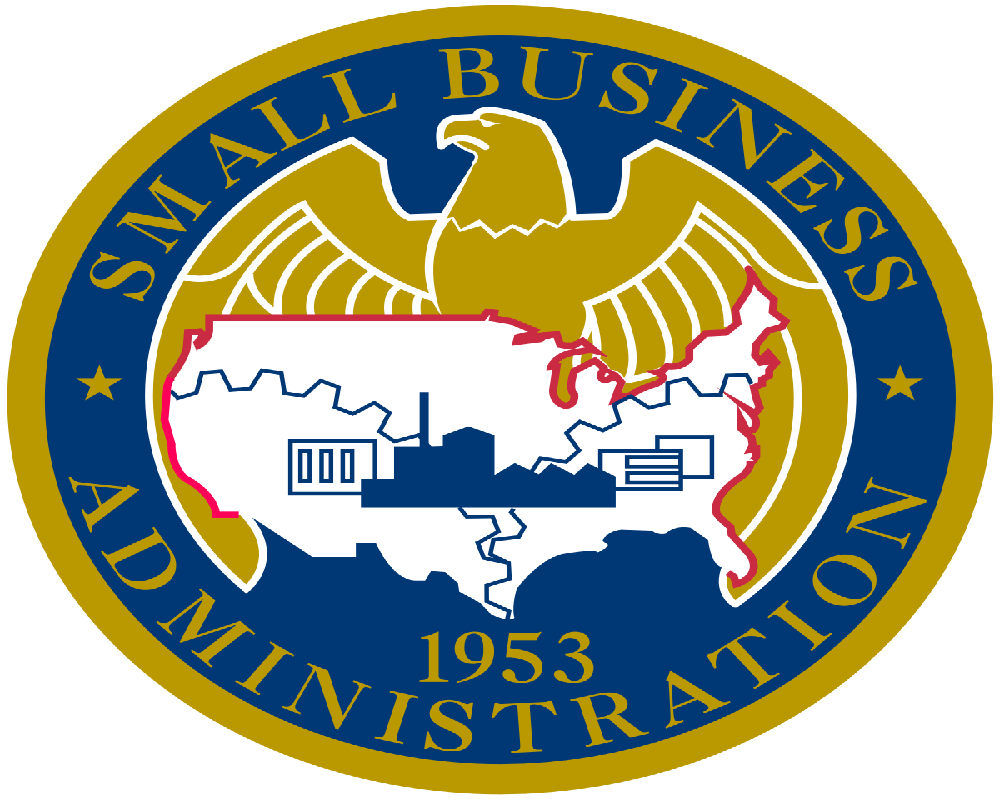
Paycheck Protection Program - Forgivable SBA Loan
The CARES Act creates a new type of loan for the United States Small Business Administration (SBA) to administer. Unlike the disaster loans currently available through the SBA, these loans are potentially forgivable up to 100% of the principal amount borrowed. Additionally, unlike the disaster loans, these forgivable loans are not tied directly to establishing losses suffered during the national disaster — there is a presumption of negative impact from COVID-19. These loans do not require collateral or guarantees. What this means to you is that the other eligibility requirements of the SBA loan participation (e.g., average annual receipts) are not applicable, and this program is available (i) to many new businesses not otherwise able to avail themselves to the SBA loan programs, and (ii) provides much friendlier terms than traditional SBA loan programs.
Eligibility
Eligible entities are those with less than 500 employees, including the following:
- Businesses
- 501(c)(3) nonprofit organizations
- Veterans organizations
- Certain tribal business concerns
- Eligible self-employed individuals
- Independent contractors
- Sole proprietorships
- Businesses in the accommodation and food services industry (NAICS 72) that have less than 500 employees per physical location
For the purposes of determining the 500 employee threshold, applicants should include full time, part-time and other basis employees. General SBA affiliations apply except such rules are waived with respect to:
- Businesses in the accommodation and food services industry (NAICS 72),
- Franchises assigned a franchise identifier code
- Business licensed under Section 301 of the Small Business Investment Act
Amount of Loan
Generally, the amount of the loan is capped at the lesser of $10 million and 2.5 times the average monthly payroll costs incurred in the one-year period before the date of the loan. Payroll costs include salary/wages/tips, sick/family leave/PTO, severance payments, group health benefits (including insurance premiums), retirement benefits, and state or local taxes assessed on employee compensation. However, for any employee who is paid more than $100,000 salary, only the amount up to $100,000 (prorated for the covered period) is calculated into the number.
In the case of seasonal employers, the employer may choose to calculate the average monthly payroll costs based on the 12-week period starting February 15, 2019 or the period starting March 1, 2019 through June 30, 2019.
In the case of new employers not in business between February 15, 2019 and July 30, 2019, the average monthly payroll costs is calculated based on the period beginning January 1, 2020 through February 29, 2020.
Terms of Loan
An eligible borrower may receive one covered loan, and such proceeds may be used for: payroll costs; continuation of group health care benefits during periods of paid sick, medical, or family leave, or insurance premiums; salaries or commissions or similar compensation; interest on mortgage obligations; rent; utilities; and interest on other outstanding debt.
The terms of the amount of any portion of the loan that is not forgiven will be for a term not to exceed 10 years and at an interest rate of no more than 4%.
Notably, certain SBA requirements are waived. Loans are available with:
- No personal guaranties of shareholders, members or partners
- No collateral
- No proving recipient cannot obtain funds elsewhere
- No SBA fees (may still have to pay lender processing fee)
- No prepayment fee
Forgiveness
The amount of the loan that is forgivable is the sum of the payroll costs, mortgage interest payment, rent, and utilities incurred or paid by the borrower during the 8-week period beginning on the loan origination date. If the recipient of the loan laid off employees or reduced wages/salaries of its workforce in the period between February 15, 2020 and June 30, 2020, the amount of forgiveness is reduced proportionally by (i) any reduction in employees retained compared to historical levels, and (ii) the decrease in pay of any employee beyond 25% of their historical compensation. Notably, furloughs would necessarily impact this loan forgiveness analysis as well.
To encourage workforce stabilization, the CARES Act takes into account that many businesses might already have or are planning to lay off personnel or cut salaries. If those changes were made between February 15, 2020 and April 26, 2020, those changes are not counted if the business rehires the number of personnel or returns the adjusted salary, as applicable, by June 30, 2020.
Borrowers must apply for forgiveness with the lender servicing the loan. Lenders have 60 days to review and make a determination. Any portion of the loan that is forgiven will be excluded from gross income.
Related Assistance
The CARES Act also creates a new grant program under the SBA’s Office of Disaster Assistance to provide quick relief for applications awaiting processing of SBA Economic Injury Disaster Loans (“EIDL”). Loan applicants can get up to $10,000 to cover immediate payroll, mortgage, rent, and other specified expenses. This grant does not have to be repaid. A business that receives an EIDL can apply for, or refinance its EIDL into, the forgivable loan product.
Further, lenders on existing SBA backed loans are encouraged to provide payment deferments and extend maturity dates to avoid balloon payment or requirements that would increase debt as a result of deferment. The SBA will pay lenders the deferred principal and interest for a period.
The CARES Act also provides assistance to businesses through the modification of rules related to net operating losses (“NOLs”), interest expense deductions, alternative minimum tax credits and trade or business losses of non-corporate taxpayers. Many of these modifications are designed to provide critical cash flow and liquidity to businesses during the COVID-19 emergency, including through amending prior tax returns to obtain tax refunds. What this means to you is that employers have several tools available to them to help with cash flow, claim tax refunds, or reduce upcoming tax payments. Below are some of those tools:
Employee Retention Credit
Under the CARES Act, employers may be eligible for a refundable tax credit for the employer’s share of the 6.2% Social Security tax (the “SSI Tax Credit”). The potential SSI Tax Credit is for 50% of the first $10,000 in qualified wages (including health plan expenses) paid to each employee commencing on March 13, 2020.
To be eligible, an employer must (i) have had operations fully or partially suspended because of a shut-down order from a governmental authority related to COVID-19, or (ii) have had gross receipts decline by more than 50% in a calendar quarter when compared to the same quarter in 2019 (and will remain eligible until the earlier of (i) gross receipts exceeding 80% relative to the same quarter in the prior year, or (ii) December 31, 2020). For employers with more than 100 employees (based on 2019 employment levels), qualified wages are limited to wages paid to employees who were not providing services due to the COVID-19 crisis.
Note, however, that the SSI Tax Credit is not available if the employer receives a covered loan from the SBA, as discussed above under Forgivable SBA Loan Program.
Payroll Tax Deferral
In addition to potentially receiving the SSI Tax Credit, the CARES Act allows employers to defer the payment of the employer’s share of the 6.2% Social Security tax on wages paid beginning on March 27, 2020 and ending on December 31, 2020. A corresponding deferral is also permitted for the equivalent portion of self-employment taxes.
The deferred amounts are payable in two installments, with 50% of such taxes being due on December 31, 2021, and the remainder due on December 31, 2022.
Note, this deferral of Social Security taxes is not, however, allowed where the employer has had a covered loan forgiven, as discussed above under Forgivable SBA Loan Program.
Business Interest Deductions
For the 2019 and 2020 tax years, taxpayers may elect to increase the limit on allowable business interest deduction from 30% to 50% of adjusted taxable income (“ATI”). In addition, taxpayers can elect to use their adjusted taxable income (ATI) in 2019 in place of their 2020 ATI for purposes of determining the deductibility of their business interest expense for 2020, which could increase the business interest deduction. Partnerships are subject to special provisions. This provision is intended to allow businesses to increase liquidity with a reduced cost of capital, so that the businesses are able to continue operations and keep employees on payroll.
Net Operating Losses
The 2017 tax reform bill changed the treatment of NOLs. The CARES Act relaxes these limitations on a corporation’s use of NOLs. The CARES Act allows businesses to carry back NOLs incurred in 2018, 2019, and 2020 for five years (excluding offset to untaxed foreign earnings transition tax). Previously, these NOLs could only be carried forward. This could be significant for businesses that have the ability to carry back NOLs to offset income that was taxed at 35% before 2017 tax reform.
In addition, for taxable years beginning prior to January 1, 2021, taxpayers can offset 100% of taxable income with NOL carryovers and carrybacks (instead of limiting such offsets to 80% of taxable income). If there are refunds available by operation of these new rules, corporations can use the IRS’s quick refund procedures (Form 1139) to claim the refund.
There are several other provisions in the CARES Act that are not highlighted above. Those provisions include, among others, enhancements to the nation’s programs to support the health care system, provisions and investments to improve the nation’s preparation for future outbreaks, and the providing of relief for educational institutions and other designated industries.
As always, please feel free to reach out to us to see how these provisions can best help you during this time.
Stay safe and healthy!
Families First Coronavirus Response Act
|
In addition to the legislation outlined below, an additional estimated $2.2 trillion stimulus package is in the works. It has been passed by the Senate, but still needs to be passed by the house and signed by the President. Once that happens and the details are finalized, we will inform you on how that stimulus package, in conjunction with the information in this email, can benefit businesses and their employees.
More guidance regarding the details of these measures is anticipated to be released soon. Please know that we are receiving updates almost daily on the new laws being passed and will continue to share that information with you as it becomes available.
Department of Labor Poster The DOL has provided a poster that each employer is required to keep posted, in conspicuous places on their premises where notices to employees are generally posted. This poster summarizes the Employees' Rights under the FFCRA. Click here for a link to the DOL poster. Click here for additional DOL information as it relates to COVID-19 and the Workplace.
Paid Sick Leave and Expanded Family and Medical Paid Leave Generally, employers covered under the Act must provide employees with up to two weeks (80 hours, or a part-time employer's two-week equivalent) of paid sick leave based on the higher of their regular rate of pay, or the applicable state of Federal minimum wage, paid at: - 100% for qualifying reasons #1-3 below, up to $511 daily and $5,110 total; - 2/3 for qualifying reasons #4 and #6 below, up to $200 daily and $2,000 total; and - Up to 10 weeks more of paid sick leave and expanded family and medical leave paid at 2/3 for qualifying reason #5 below for up to $200 daily and $12,000 total. A part-time employee is eligible for leave for the number of hours that the employee is normally scheduled to work over that period.
Qualifying Reasons for Leave Related to COVID-19 Under the FFCRA, an employee qualifies for paid sick time if the employee is unable to work (or unable to telework) due to a need for leave because the employee: 1. is subject to a Federal, State, or local quarantine or isolation order related to COVID-19 (this does not apply to recently announced "Stay-at-Home" orders); 2. has been advised by a health care provider to self-quarantine related to COVID-19; 3. is experiencing COVID-19 symptoms and is seeking a medical diagnosis; 4. is caring for an individual subject to an order described in (1) or self-quarantine as described in (2); 5. is caring for a child whose school or place of care is closed (or child care provider is unavailable) for reasons related to COVID-19; or 6. is experiencing any other substantially-similar condition specified by the Secretary of Health and Human Services, in consultation with the Secretaries of Labor and Treasury.
Covered Employers The paid sick leave and expanded family and medical leave provisions of the FFCRA apply to certain public employers, and private employers with fewer than 500 employees. Small businesses with fewer than 50 employees may qualify for exemption from the requirement to provide leave due to school closings or child care unavailability if the leave requirements would jeopardize the viability of the business as a going concern.
Eligible Employees All employees of covered employers are eligible for two weeks of paid sick time for specified reasons related to COVID-19. Employees employed for at least 30 days are eligible for up to an additional 10 weeks of paid family leave to care for a child under certain circumstances related to COVID-19.
Tax Credits to Help Offset Providing Paid Leave For covered employers who are required to provide the above paid leave, the FFCRA offers some relief through tax credits. A payroll tax credit is available for up to $511 per day for paid sick leave and up to $200 per day for family and medical leave. This credit will be based on each employee's total for 10 days of paid leave. Employers should maintain records on employees who qualify for the paid leave, including the reason for the leave and the number of days taken in order to qualify for the credit. This tax credit will result in an immediate dollar-for-dollar tax offset against payroll taxes. Where a refund is owed, the IRS will send the refund as quickly as possible. Self-employed individuals under similar circumstances will also be eligible for tax credits which can be claimed on the income tax return and/or can reduce their estimated tax payments.
As mentioned above, more guidance regarding the details of these measures is anticipated to be released soon. Please know that we are receiving updates almost daily on the new laws being passed and will continue to share that information with you as it becomes available. Stay safe and healthy! Sources: IRS and Department of Labor |
New 2019 Federal Income Tax Filing Deadline Announced
On Friday, Treasury Secretary Steven Mnuchin announced that the deadline to file your 2019 federal income tax return has been moved from April 15, 2020 to July 15, 2020. Taxpayers can also defer federal income tax payments due on April 15, 2020 (including first quarter 2020 estimated federal income tax payments), to July 15, 2020, without penalties and interest, regardless of the amount owed.
This deferment applies to all taxpayers, including individuals, trusts and estates, corporations and other non-corporate tax filers as well as those who pay self-employment tax. It is expected that states, including Missouri, will follow this new filing deadline as well.
Taxpayers do not need to file any additional forms to qualify for this automatic tax filing extension and payment relief.
Although the filing deadline has been moved to July 15, 2020, we will continue working to complete tax returns in a timely manner. As we continue to monitor the issues related to the COVID-19 virus, we will keep you informed of any further information as it is released.
If you should have any questions, please feel free to contact our office anytime. We thank you for the trust you have placed in us, and we hope you and your family stay safe and healthy.
Important 2019 Tax Filing Information
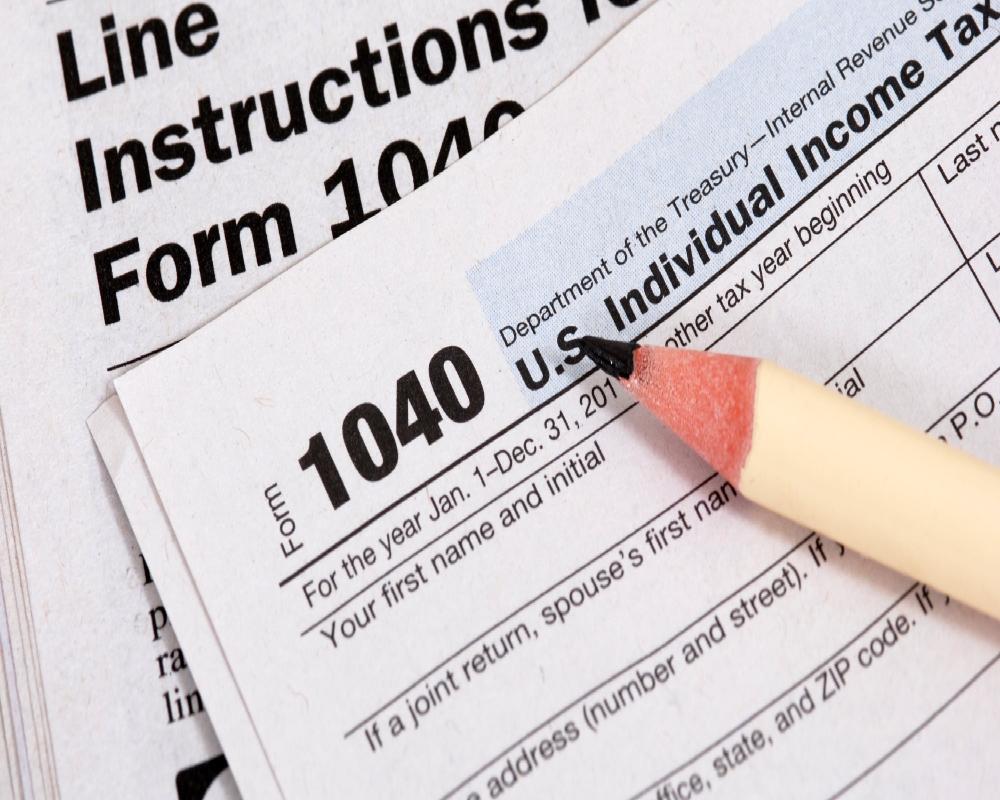 We wanted to inform you of some important 2019 tax filing information in light of the current Novel Cornonavirus (COVID-19) pandemic.
We wanted to inform you of some important 2019 tax filing information in light of the current Novel Cornonavirus (COVID-19) pandemic.
- The 2019 individual income tax filing deadline is still April 15, 2020.
- The Treasury Department is allowing a deferment of 90 days (July 15th) to pay any 2019 federal income taxes that are owed, up to $1 million for individuals and $10 million for businesses.
- Estimated federal income tax payments for the first quarter of 2020 which would normally be due on April 15th have been given a 90 day deferment (July 15th).
- During this 90 day deferment period, taxpayers will not be subject to interest or penalties.
- Missouri will be applying these same deferments for any 2019 Missouri income taxes that are owed and estimated income tax payments for first quarter 2020.
- Any 2019 contributions to retirement plans (i.e. IRAs) or college savings plans (i.e. 529s) are still due by April 15, 2020.
In review, your individual income tax return still needs to be filed by April 15, 2020. You do not need to file anything special to take advantage of the payment deferment. Make sure that your payment(s) is(are) made by July 15, 2020.
If you should have any questions about how these changes might affect you, please feel free to contact our office. We thank you for the trust you have placed in us, and we hope you and your family remain healthy and safe.
Our Response to COVID-19
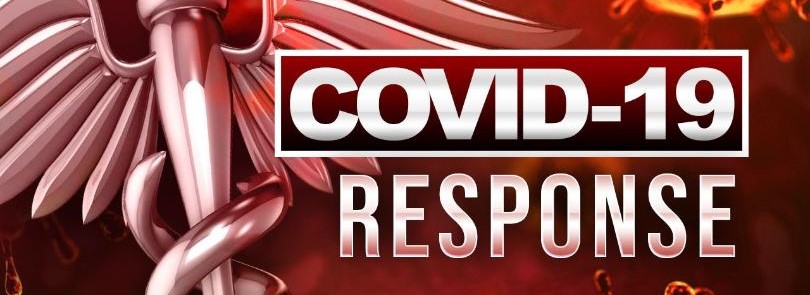 The health and safety of our clients, staff, and those in our community are extremely important to us. In response to the Novel Coronavirus (COVID-19) pandemic and the recommendations from local, state, and federal agencies we have made a few changes that we wanted to make you aware of.
The health and safety of our clients, staff, and those in our community are extremely important to us. In response to the Novel Coronavirus (COVID-19) pandemic and the recommendations from local, state, and federal agencies we have made a few changes that we wanted to make you aware of.
Our office does remain open at this time. However, earlier this week we began a "work from home" policy allowing part of our staff to work remotely in an effort to reduce the number of people physically in our office. All staff are still accessible by email or phone in order to avoid any disruption in normal business activity. We are also encouraging clients to mail or drop-off their tax documents with a follow-up phone call as an alternative to an in-person meeting.
In the event that you feel the need to physically come into our office please know that we are taking the following actions:
- Increased cleaning and sanitizing of surfaces in lobby and commonly used areas
- Hand sanitizer throughout the office
- Reducing the number of people physically in the office through our "work from home" policy
- Offering client phone meetings with mail-in or drop-off options
- Limited in-person meetings, as necessary
As of now the tax filing deadline is still April 15th. However, Treasury Secretary Steven Mnuchin has announced that most taxpayers will get a 90 day extension to pay federal income taxes that are owed. More details regarding these tax payment deferments are expected soon.
Our team is well equipped to continue providing the level of service you have come to expect from us. If you should have any questions, please feel free to contact us anytime. We thank you for the trust you have placed in us, and we hope you and your family remain healthy and safe.
Your Security Online - Vacation Security
 As your financial advisors, we want to remind you that the “bad actors” who want to compromise your security online don’t take vacations. Instead, they have an eye out for when you do. Here’s how to keep them from compromising your online safety while you travel:
As your financial advisors, we want to remind you that the “bad actors” who want to compromise your security online don’t take vacations. Instead, they have an eye out for when you do. Here’s how to keep them from compromising your online safety while you travel:
Before You Go:
-
Sign up for fraud alerts from your financial institutions
Many major banks and credit cards can send you free alerts by text, email or phone call if you have a suspicious transaction. Be sure to call and see if this service is available, and that you have it activated before you leave on vacation.
-
Turn off location services, and auto connect for Wi-Fi and Bluetooth on your devices
These can be a great convenience, helping you move seamlessly through your day. But, if you leave them on while you are on vacation, anyone sitting nearby – say in a hotel or coffee shop – can track you or get access to your data. If you take your laptop, turn off auto file sharing, too. -
Enable PINs and passcodes on your devices
This is your first line of defense in case your phone is lost or stolen. Also, check to be sure it’s set to require the password in the shortest amount of time. Annoying for you – but even more annoying for the “bad actors”. -
Install anti-virus protection
Be sure all your devices are equipped with virus protection, and that it’s running the latest updates.
While You’re Away:
-
Use only password-protected Wi-Fi from networks you recognize
Avoid “free” public Wi-Fi – you might pay the price of giving the bad actors access to your information. Most hotels (and even some restaurants) have password-protected networks. -
Don’t post your vacation on social media while you’re away
Even if you or one of your family members is “Instagram Famous,” stay off of social media platforms while you’re away. Your posts are broadcasting to strangers that your home is vacant, as well as giving plenty of clues when you’re not at your hotel, too. Post highlights from your trip when you get back. -
Be careful on public computers
If you use a public computer – in your hotel business center or an internet café, for example – be sure to log out of any accounts you accessed before leaving. (And you should note that if you do need to check financial accounts, it’s usually safest to do it from a wired connection – not Wi-Fi – or a cellular on your phone.) Also, if a URL starts with “https”//” it means you have a more secure connection.
Thank you for allowing us to work with you to help you pursue your financial goals, and we wish you continued success.
Seven Summer Safety Tips to Save Lives
We found this information on pool safety to be a good reminder. We thought you might be able to use it, too.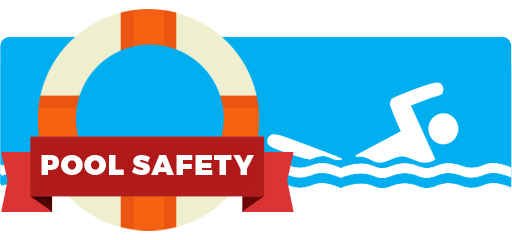
Keeping Summer Safe: Pool and Spa Safety Tips
The backyard pool can be great summer fun, but it can also be a source of danger for children. Every year hundreds of children fatally drown. If you have a pool or spa, here are seven simple tips to keep your children and their friends safe during swim season.
Seven Safety Tips to Save Lives
1) Adult Supervision: Always be present when children are using the pool. As any parent knows, it only takes moments for children to place themselves in dangerous situations, so stay attentive.
2) Keep a Life Ring or Shepherd’s Crook Nearby: This lifesaver can quickly pull someone from the pool. Always check that it is in good condition.
3) Fence and Alarms: Make sure your pool is protected by a fence. You may even want to add an alarm system that can warn you of unintended use of the pool.
4) Rope or Float Line: This can distinguish between the shallow and deep ends and serve as a visual reminder to young children not to pass.
5) Lock Your Hot Tub Cover: Young children may not be tall enough to stand up in the hot tub or fully appreciate how quickly heated water can lead to dehydration or other accidents.
6) Safely Store All Pool Chemicals: These chemicals represent a danger not only to children but the adults who use them. Find a safe storage area and handle them properly.
7) Cover Pool Drains: Suction entrapment can lead to death. Make sure all drains are properly installed with certified covers. Periodically check to ensure that they are not damaged.
With these simple steps, you can increase the safety of your pool or hot tub, without any loss in the fun and joy they bring.
Vacation Homes: Do You Understand the Tax Nuances?
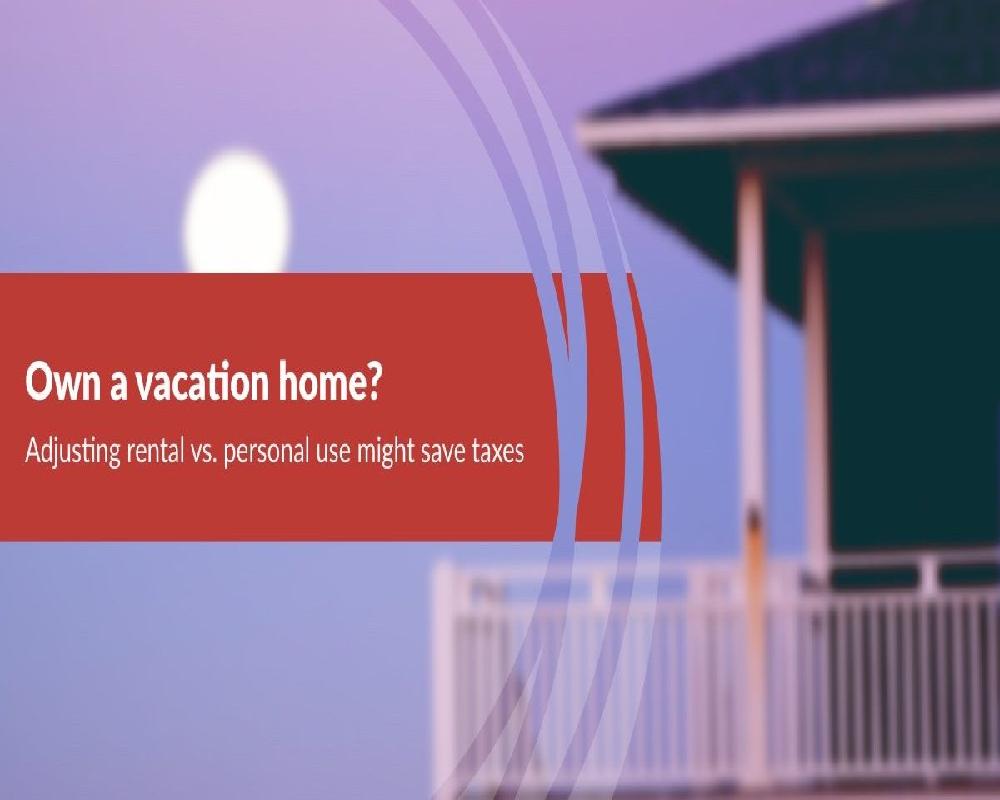 Owning a vacation home can offer tax breaks, but they may differ from those associated with a primary residence. The key is whether a vacation home is used solely for personal enjoyment or is also rented out to tenants.
Owning a vacation home can offer tax breaks, but they may differ from those associated with a primary residence. The key is whether a vacation home is used solely for personal enjoyment or is also rented out to tenants.
Sorting it out
If your vacation home is not rented out, or if you rent it out for no more than 14 days a year, the tax benefits are essentially the same as those you’d receive if you own your primary residence. In this scenario, you’d generally be able to deduct your mortgage interest and real estate taxes on Schedule A of your federal income tax return, up to certain limits. Also, you may exclude all your rental income.
But the rules are different if you rent out your vacation home for 15 or more days annually. First, the rental income must be reported. Second, in this scenario, the IRS considers your vacation home to be an investment property and, thus, allows deductions related to the rental of the property, with certain limitations. In addition to mortgage interest and real estate taxes, these deductions generally include insurance, utilities, housekeeping, repairs and depreciation. Also, the deduction for certain categories of expenses cannot exceed the rental income.
If you exceed this number of days of rentals and use your vacation home for personal use, these deductions will be limited by the ratio of actual rental days to the total days of use of the home. Suppose, for example, that you personally use your vacation home for 25 days and rent it for 75 days in a year, so the home is used for 100 total days. Here, you would be allowed to deduct 75% of the expenses listed above as rental expenses. Be aware that a portion of the mortgage interest and real estate taxes may be deductible on Schedule A. In certain circumstances, however, the personal portion of your mortgage interest may not be deductible.
Bottom line
If you want to maximize the tax benefits of your vacation home, limit your personal use of the home to no more than 14 days or 10% of the total rental days. If you want to personally use the home more than this, you can still realize some limited tax benefits. Contact our firm for details about your specific situation.
2nd Quarter Estimated Tax Payment Reminder
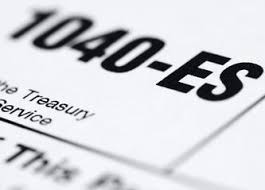 If you make estimated tax payments, this is a reminder that your second quarter Federal and Missouri tax estimates are due on or before June 17, 2019.
If you make estimated tax payments, this is a reminder that your second quarter Federal and Missouri tax estimates are due on or before June 17, 2019.
If we prepared your tax return, please use your pre-printed forms and mail with your checks to the address indicated on the estimate vouchers. You should refer to your 2018 tax folder for this information. Also, be sure to write your social security number and "2019 1040-ES" on the memo line of your check.
Understanding 529 College Savings Plans
 Many parents today suffer from sticker shock when they learn what it costs to send their children to college. While the cost of college can be a hard pill to swallow for parents of college-bound teens, now is the time for parents to get familiar with a 529 College Savings Plan. The commonly used college savings plan has offered parents, and their college-bound kid(s), tax-free withdrawals to pay for college.
Many parents today suffer from sticker shock when they learn what it costs to send their children to college. While the cost of college can be a hard pill to swallow for parents of college-bound teens, now is the time for parents to get familiar with a 529 College Savings Plan. The commonly used college savings plan has offered parents, and their college-bound kid(s), tax-free withdrawals to pay for college.
Here’s what you need to know about a 529 College Savings Plan:
- Also known as a “qualified tuition program,” a 529 Plan allows an individual to save for higher education expenses for a determined beneficiary.
- Anyone—whether they are a family member or friend—can establish a 529 Plan for a designated beneficiary.
- A 529 Plan is provided by a state, an agency of the state or by an educational institution itself.
- Money invested in the plan accumulates on a tax-deferred basis and distributions used for higher education expenses are tax and penalty-free, as long as the funds are used for approved education expenses.
If you are considering establishing a trust for your child to pay for college instead, here’s what you should know:
- Most trust funds may not be effective means of sheltering this cash from the financial aid process—if your child will be applying for aid trust funds can be counted in the financial aid process as an asset of the child. This could affect your child’s eligibility for aid.
- A potential work around to the above issue could be established if the trust was restricted to withdrawing just the principle for the beneficiary.
Be sure to work with a financial professional before investing in a 529 Plan to understand eligibility requirements. Some plans will only allow savings to be used to pay for college in that designated state, for example.
If you are interested in starting a 529 College Savings Plan for your children, give us a call today at 417.883.1212 to discuss savings and investment strategies.
Investors should consider the investment objectives, risks, charges and expenses associated with municipal fund securities before investing. This information is found in the issuer's official statement and should be read carefully before investing.
Investors should also consider whether the investor's or beneficiary's home state offers any state tax or other benefits available only from the state's 529 Plan. Any state-based benefit should consult their financial or tax advisor before investing in any state's 529 Plan.
Healthcare Costs In Retirement

Over the course of retirement, healthcare expenses are anticipated to cost $280,000, on average, for a couple turning age 65 today.1 Yet, many retirees significantly underestimate their out-of-pocket healthcare costs, assuming that Medicare and private insurance will cover far more than it does. Below we’ve debunked four of the most common myths about healthcare costs to help you make confident and informed decisions about planning for healthcare in retirement.
MYTH #1: Medicare will cover all of my healthcare expenses. Misinformation about what Medicare does and does not cover can lead many people to underestimate how much money they may need to cover healthcare expenses after age 65. While Medicare Parts A and B provide coverage for most hospital stays, emergency room visits, certain lab tests, and doctor’s office visits, you may still be responsible for a portion of these costs, including copays. Medicare also does not cover prescription drugs administered outside of a hospital setting and most dental, hearing, vision, and long-term care services, which can add up quickly over time.
MYTH #2: I don’t need to purchase a prescription drug plan. Certain prescription drugs can cost hundreds or even thousands of dollars per month, especially those used to treat rare conditions or where a generic version is not available. Purchasing a prescription drug coverage plan, such as Medicare Part D or certain Medicare Advantage plans offering prescription drug coverage, may help lower your out-of-pocket healthcare expenses in retirement.
MYTH #3: My Social Security benefits will cover anything Medicare doesn’t cover. While most retirees rely on Social Security benefits to provide a portion of their income needs in retirement, keep in mind that Social Security is only expected to replace about 40% of the average worker’s pre-retirement income in retirement.2 Without additional income from sources such as a company pension, employer retirement plan(s), and personal savings, most retirees find that Social Security alone falls short of paying for all of their expenses in retirement.
MYTH #4: It’s less expensive to age at home. Remaining in your home is not always the least expensive option if you require assistance with activities of daily living, such as cooking, cleaning, dressing, bathing, and transportation. A 2018 study reports the average annual cost for home health aides is $50,336.3 While that’s roughly the same as the average cost of an assisted living facility at $48,000 a year,3 it’s important to consider the other costs associated with remaining in your home. These may include retrofitting your home with wheelchair ramps and safety features, in addition to paying your mortgage or rent, homeowner’s insurance, real estate taxes, utilities, and regular maintenance and repairs— all of which can quickly push the cost of remaining in your home with the assistance of paid caregivers well over the estimated average.
Call the office today if you have questions or concerns about how you will pay for healthcare costs in retirement.
1http://money.com/money/5246882/heres-how-much-the-average-couple-will-spend-on-health-care-costs-in-retirement/
2https://www.ssa.gov/planners/retire/r&m6.html
3https://www.genworth.com/aging-and-you/finances/cost-of-care.html
2019 Standard Mileage Rates

Are you using your personal vehicle for your small business, farm or in service of a charitable organization? You could be eligible for a mileage deduction. The IRS has issued the new standard mileage rates for 2019. They are as follows:
- 58 cents per mile driven for business use, up 3.5 cent from the rate for 2018
- 20 cents per mile driven for medical or moving purposes, up 2 cents from the rate for 2018
- 14 cents per mile driven in service of charitable organizations, unchanged from 2018
As always, documentation is required for all mileage expenses. Records must include the amount of the expense, date and place it was incurred, and an acceptable business purpose. Examples of records include receipts, canceled checks and mileage logs.
Source: IRS


 On June 5, President Trump signed the Paycheck Protection Program (PPP) Flexibility Act (The Act) into law, introducing favorable changes to several issues within the PPP loan program for small businesses.
On June 5, President Trump signed the Paycheck Protection Program (PPP) Flexibility Act (The Act) into law, introducing favorable changes to several issues within the PPP loan program for small businesses.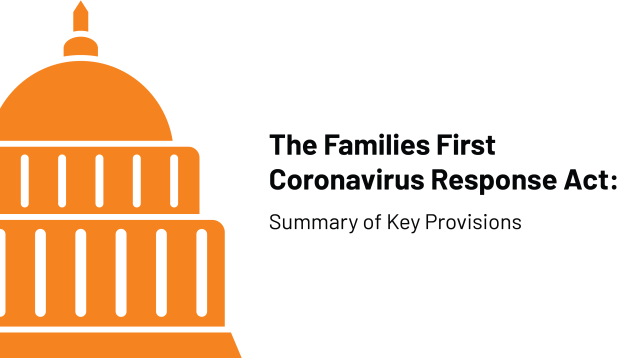 On March 18,2020, the President signed the Families First Coronavirus Response Act (FFCRA or Act) into law. The legislation will enable covered employers to keep their workers on their payrolls, while at the same time ensuring that workers are not forced to choose between their paychecks and the public health measures needed to combat the virus. This will be achieved through paid sick leave and expanded family and medical leave for specified reasons related to COVID-19. These provisions will apply from April 1, 2020 through December 31, 2020.
On March 18,2020, the President signed the Families First Coronavirus Response Act (FFCRA or Act) into law. The legislation will enable covered employers to keep their workers on their payrolls, while at the same time ensuring that workers are not forced to choose between their paychecks and the public health measures needed to combat the virus. This will be achieved through paid sick leave and expanded family and medical leave for specified reasons related to COVID-19. These provisions will apply from April 1, 2020 through December 31, 2020. 